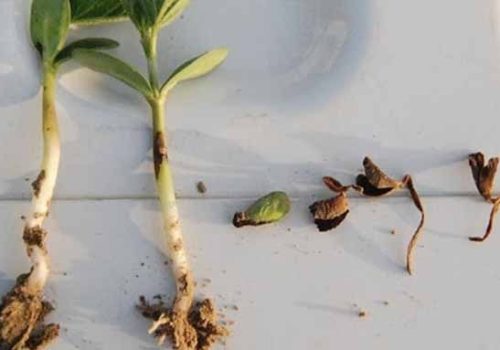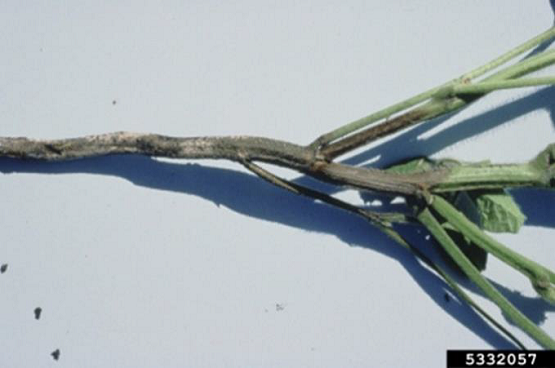
To help you navigate the many diseases impacting soybean plants, we’re providing you with a 2-part series that equips you with guidance to identify and manage nearly a dozen damaging soybean diseases that exhibit symptoms after flowering.
For additional idenitifaction tips, read the second part of our series – Soybean Diseases Series: Proper Identification.
What to look for: An early symptom of white mold is leaf wilting in the upper canopy. Leaves may look gray-green or off-color. Cankers may appear on the stems at the nodes.
When to watch: White mold is prone to develop in moderate temperatures (less than 82o F) in the canopy and under frequent rainfall especially as the plants begin to flower and set pods. White mold can cause extensive yield losses in fields that otherwise have high yield potential.
What to look for: While disease caused by the fungus Rhizoctonia can cause seedling blight, it also causes root rot in more mature soybean plants. Lower leaves may begin to turn yellow, and plants may appear stunted and less vigorous. When dug up from the soil, infected plants may reveal poorly developed root systems and discolored or rotted lateral roots. The stem may have a brick-red discoloration at the soil line that extends in either direction.
When to watch: Look for rot during later growth stages. Severely infected soybean plants that are stressed by hot, dry conditions may die. If cool, wet conditions occur after a Rhizoctonia infection, a flush of secondary roots above the stem may be visible.
What to look for: In advanced stages, leaves turn yellow, wilt and wither but remain attached. After the flowering stage, the taproot and lower stem appear silver or light gray. In later stages of the disease, black specks appear underneath the “bark” that is peeled away from the roots and stem base – hence the name charcoal rot. Seedling infestations of charcoal rot may mimic those of Rhizoctonia, producing reddish lesions on the stem of the seedling. However, if charcoal rot is present, these lesions can be scraped off with light pressure.
When to Watch: Charcoal rot typically develops in hot, dry weather in combination with nutrient-deficient soils or unfavorable growing conditions.
What to look for: If the plant is infected early in the season, symptoms of Phytophthora may resemble those of leaf blight. As plants enter the flowering stage and begin to set pods, symptoms of late-season stem and root rot may develop. The stems will show brown discoloration that extend upward from below the soil line. Infected older plants show reduced vigor or gradually die over the season.
When to watch: Look for signs of infection appearing as stem and root rot during and after flowering or as blight early in the season.

What to look for: Early symptoms include light green to yellow blotches in the interveinal leaf tissue, which can be confused with sudden death syndrome. The vascular tissues and pith of the soybean stem are also affected with a brown discoloration, which can be seen when the stems are split open. Later in the season, this brown discoloration may appear almost continuous within the stem.
When to watch: Foliage symptoms usually develop as soybean plants are beginning to set pods.
Protect the yield potential of your high-yielding soybean crop with a multiple mode of action fungicide such as Trivapro®, Miravis® Neo or Miravis® Top. Always read and follow fungicide labels to identify the best fungicide for addressing diseases observed in your fields.As you plan ahead to next season, you can reduce the risk of potential outbreaks by treating your soybean seed with a Golden Harvest® seed treatment. This will ensure that your seedlings have a fast and healthy emergence and will be better protected throughout the season. Incorporating these disease control strategies in your production plan will allow your soybean crop to achieve its highest yield potential. For information about more soybean diseases, refer to part 2 of this soybean identification guide. You can also contact your Golden Harvest Seed Advisor with questions or for additional agronomic insights.
Photos are either the property of Syngenta or used under agreement.
Syngenta hereby disclaims liability for third-party websites.